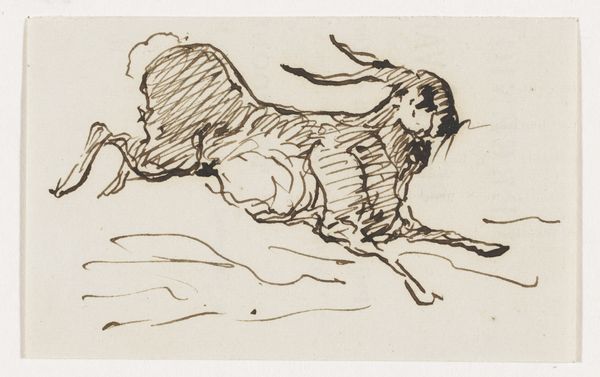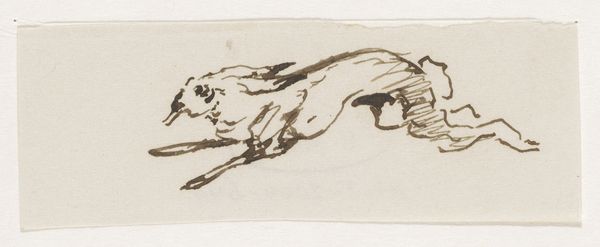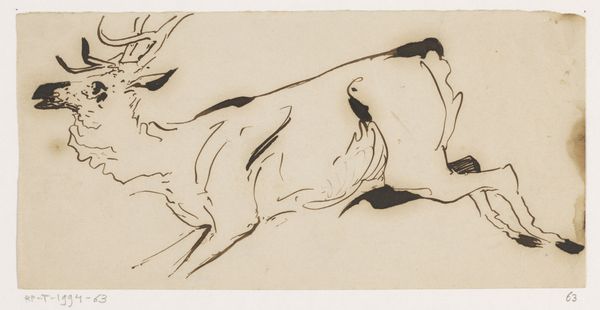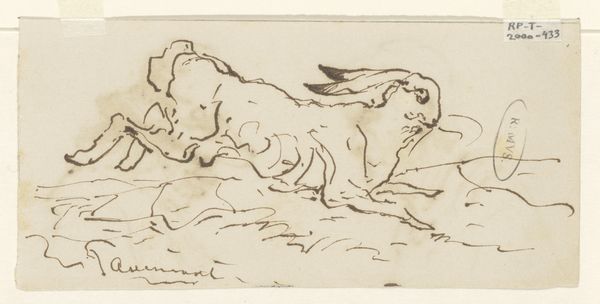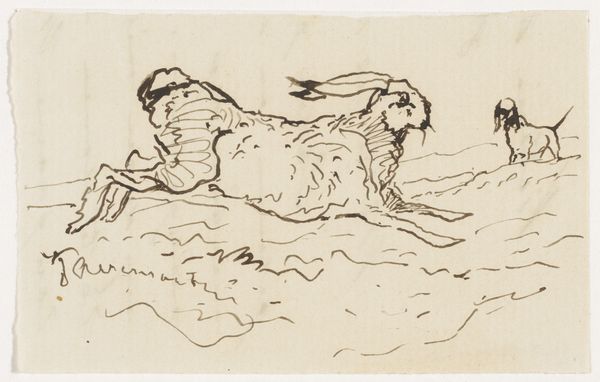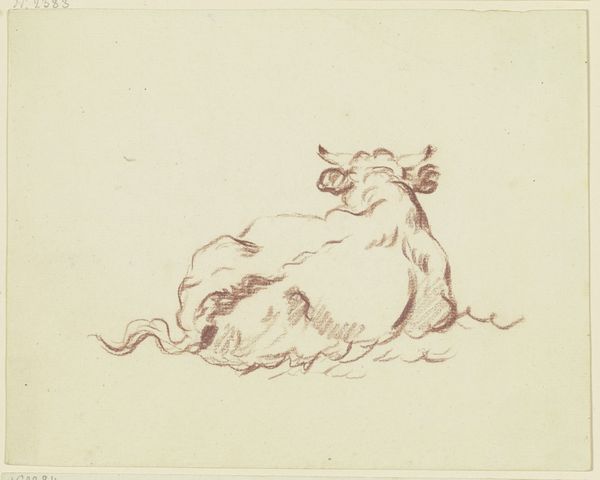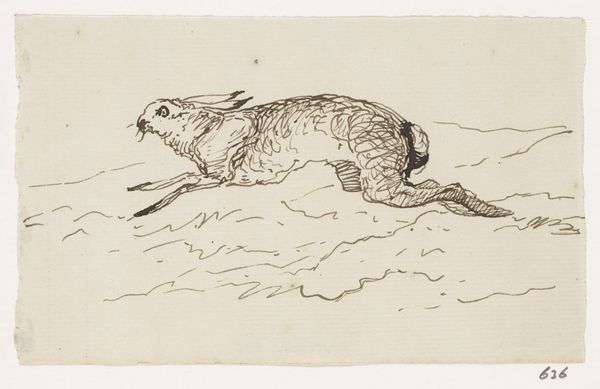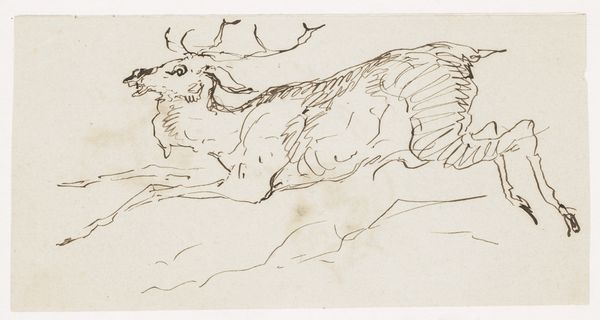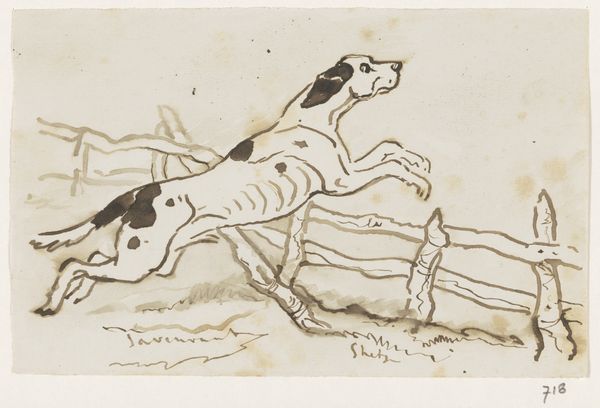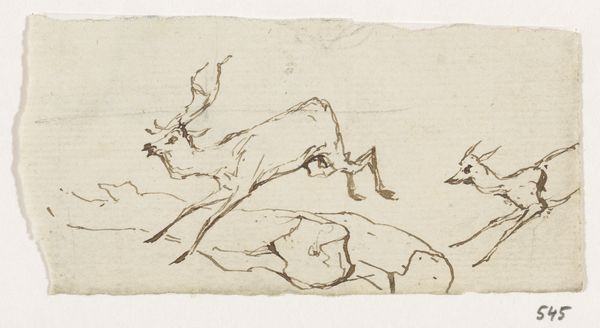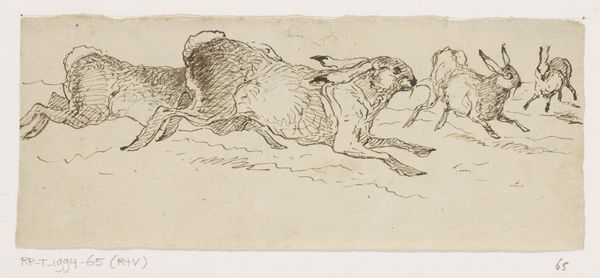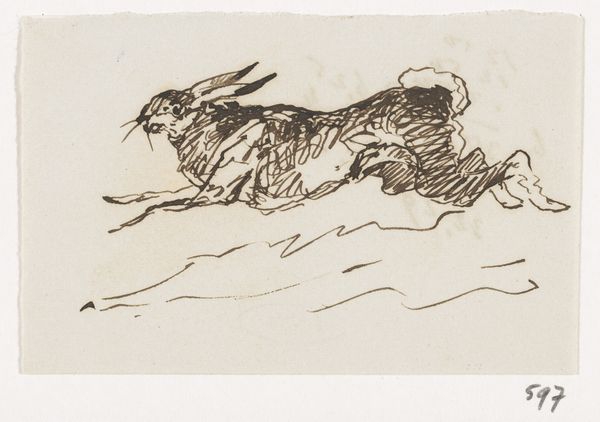
#
imaginative character sketch
#
ink drawing
#
pen sketch
#
dog
#
etching
#
personal sketchbook
#
ink drawing experimentation
#
pen-ink sketch
#
sketchbook drawing
#
watercolour illustration
#
sketchbook art
Dimensions: height 76 mm, width 136 mm
Copyright: Rijks Museum: Open Domain
Curator: This lively drawing is titled "Jachthond," or "Hunting Dog," and it comes to us from the Dutch artist Johannes Tavenraat. Created sometime between 1840 and 1880, this ink and possibly watercolour sketch resides here at the Rijksmuseum. What is your first impression? Editor: Energy. I’m struck by the palpable sense of movement and anticipation, it looks like it is ready to pounce. Curator: Indeed, Tavenraat’s quick, fluid lines expertly capture the dog’s alertness and muscular tension, even within this small scale sketch. Editor: I immediately think about what the artwork tells us about 19th-century European attitudes towards animals, specifically, the breeding and instrumental use of dogs for upper class sporting. Its meaning resides beyond simply observing aesthetic values of line, shape, form. Curator: Well, the formal economy here is deceptively simple. Consider how the dark accents of the dog's spots and ears anchor the composition, drawing the eye along its body and down toward its focused gaze. Also, its posture invites diagonal reading that emphasizes motion as a visual rhythm in an otherwise sparse picture. Editor: I see that, but I’m compelled to consider this dynamic pose within the legacy of colonialism and land usage. Dogs of European descent frequently accompany colonizers, playing roles in enforcing control. Curator: An interesting point. Though, in terms of visual presence, it has a lot to offer regarding how lines, even sparse ones, communicate a rich bodily energy. Editor: Yes, and that energy I think underscores not only its physical power but its symbolic utility within broader social power structures. It's an unsettling image once you unpack that history. Curator: Perhaps we’ve arrived at an intersection here, understanding that formal elements do not exist in isolation from history, nor the reverse. Thank you for drawing out this richer perspective. Editor: And thank you for guiding me to see the intentionality behind such lines and their movement. It helps inform the political dimension as well.
Comments
No comments
Be the first to comment and join the conversation on the ultimate creative platform.
